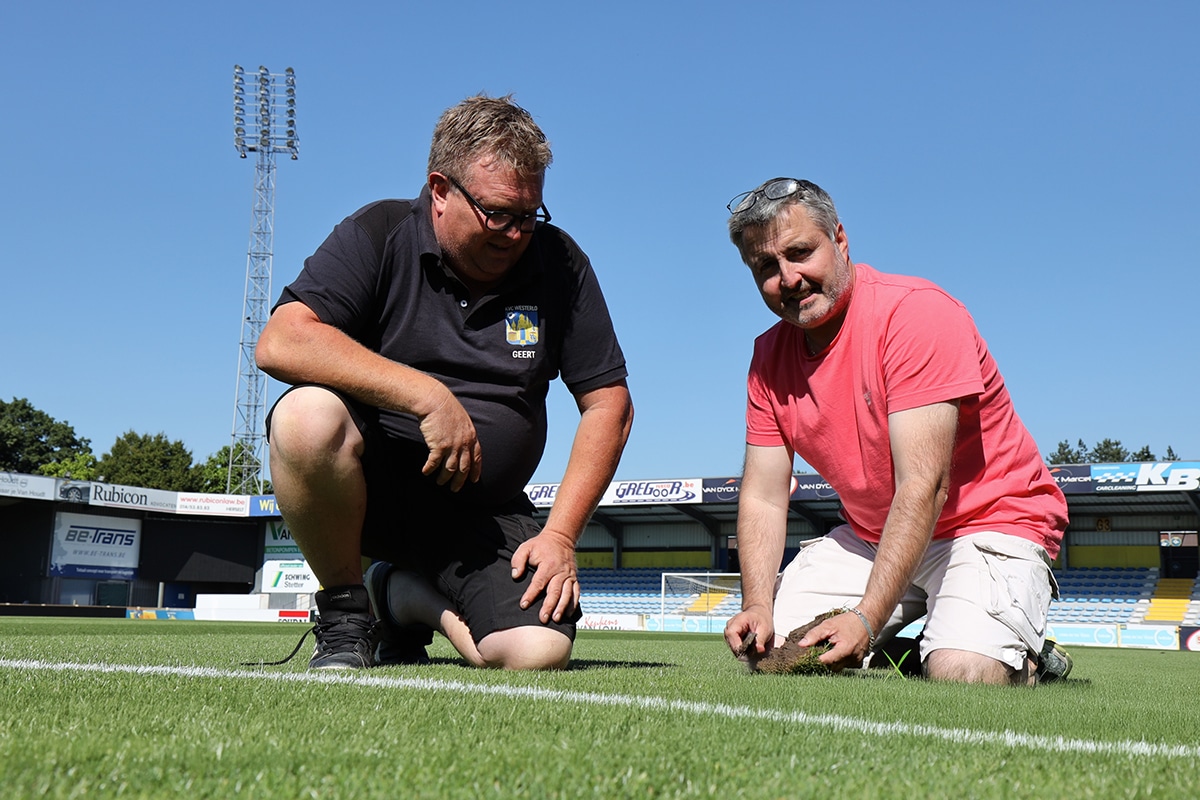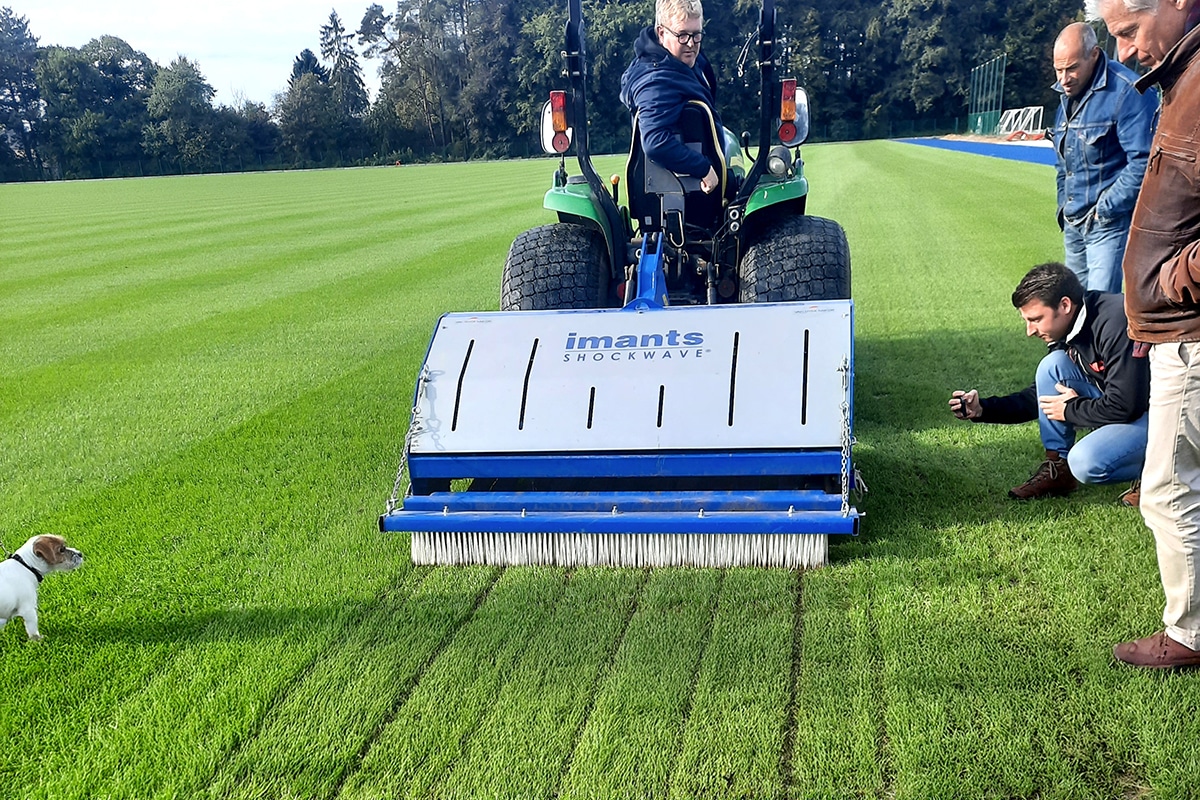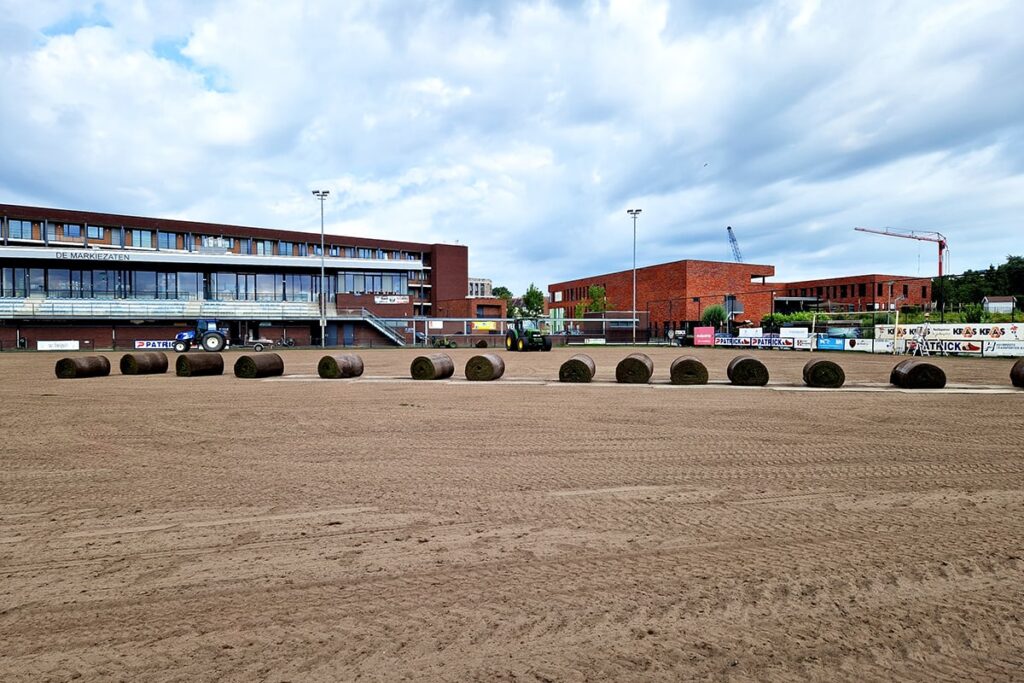
Turf for an instantly playable field
Since last summer, Beerschot - in full Koninklijke Beerschot Voetbalclub Antwerpen - has once again been playing in the highest division of Belgian soccer. A position that calls for fields in top condition, and not only in the main stadium. The management of the soccer fields was recently handed over to Krinkels' sports department.
Krinkels was approached by Beerschot in September to put and keep the team's natural grass pitches on point. Especially the practice fields for the first team, at the youth complex in Wilrijk, needed to be raised to a higher level in the short term. "At that point, it was already too late to start working with classical methods," says Steven Mattelin, sports expert at Krinkels. "That's why the decision was made to re-sod the entire field."

Powerful turf
For the re-turfing, Krinkels chose a thick, vigorous turf consisting mainly of field oatmeal. This is according to the Grass2play concept that has blown over from the Netherlands. It means that fields are no longer sown, but are laid directly with turf. "The big advantage is that the turf for 100% is raised with field pasture and given 12 to 18 months to form a dense turf and extensive root system. Field meadow never gets that time with the conventional sowing method, so it never has a chance to fully come through."
Field legume plays an important role in turf quality and robustness. After all, as long as the root system remains intact, the variety can recover well. "A few weeks of rest are enough to get a severely affected target area back to a beautiful green. As a result, the turf is good for 750 to as many as 1,000 playing hours per year, without the need for major renovation work in the spring. Because there is a dense turf immediately, weeds are also less of a problem."
Quickly playable
Another advantage is the rapid realization of a Grass2play mat. Krinkels set aside barely four weeks for Beerschot's practice field. In that time, a soil analysis was performed, drainage and irrigation were checked and renewed, the existing and heavily milled turf was milled off, the top layer was atrophied with more than 1,000 tons of calibrated sand, the turf was placed, the field was rolled and aerated and, finally, the goals, lines and corner flags were installed. Immediately after that, the field was ready to play. "From now on, the focus is on maintenance. This mainly involves windrowing against thatch formation, regular aeration and overseeding with English ryegrass. A crucial point of attention is preventing damage to the root system of the field meadow. Mowing, scarifying and cutting aeration are therefore out of the question. Overseeding is done by pricking in. Because overseeding is done with ryegrass, which germinates faster, over time the balance of the turf shifts and the turf does have to be renewed after three to five years."
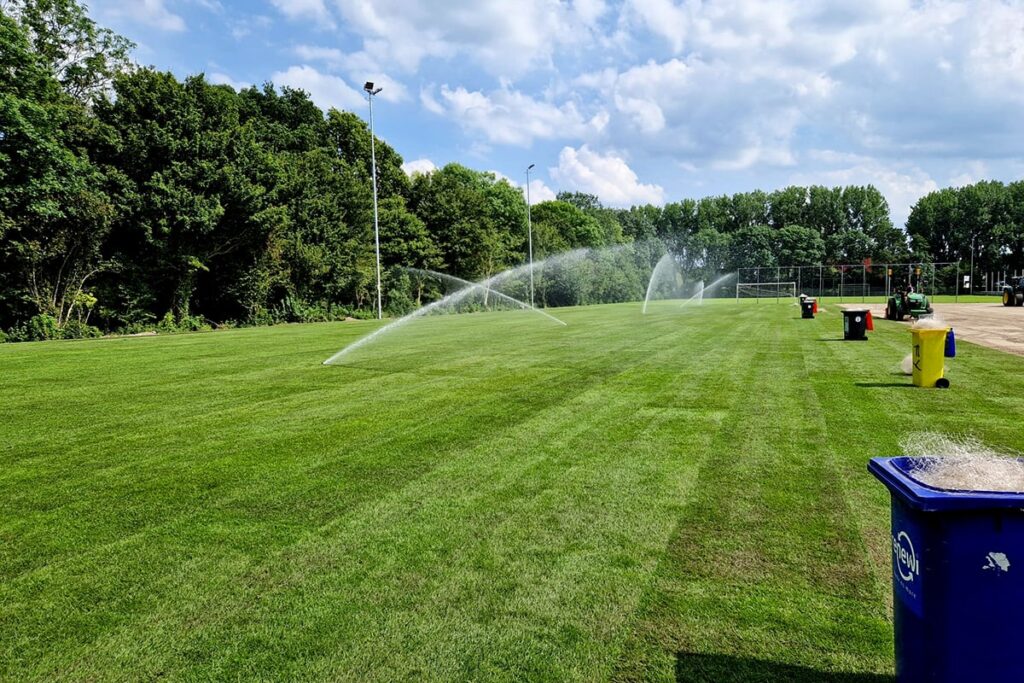
Dignified alternative to sport and play
In other words, Krinkels sees a lot of potential in the new concept not only for sports clubs, but also for public administrations that construct or renovate their sports grounds or recreation areas.
Despite the need to reseed on a rotating basis, a Grass2play mat is actually cheaper than an artificial turf field on an annual basis, according to Steven. "In addition, natural grass is better for the climate: water can infiltrate into the soil and you avoid creating heat islands. Besides the financial and climatic advantages, there are also fewer injuries, no building permit is needed and people experience it as more pleasant. Have you ever seen anyone picnicking on artificial grass?"
Heeft u vragen over dit artikel, project of product?
Neem dan rechtstreeks contact op met Krinkels nv.
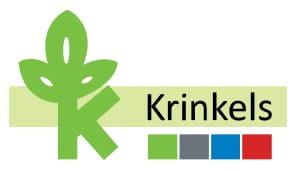 Contact opnemen
Contact opnemen


